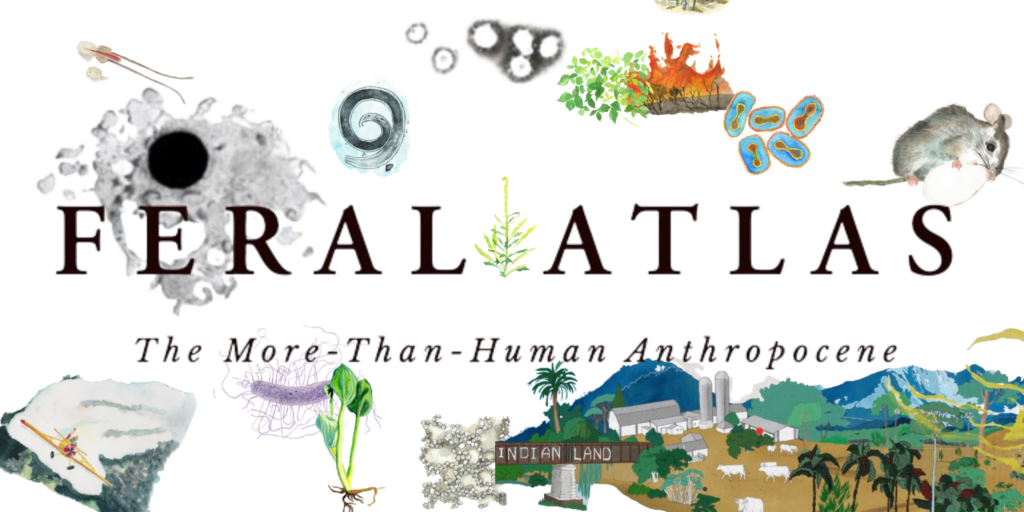
Feral Atlas is an interactive, multimedia digital landscape that allows you to investigate different ecological worlds entangled with human infrastructure projects. Comprised of 79 field reports from scientists, humanists, and artists, Feral Atlas serves as a guide for recognizing “feral” ecologies which they define as “ecologies that have been encouraged by human-built infrastructures, but which have developed and spread beyond human control.” It offers a playful, political take on the changing environment of the Anthropocene that stretches conventional notions of maps and mapping.
Feral Atlas is a great example of a multimedia, digital environmental humanities (DEH) project exploring human-nature relationships. More specifically, it explores the entanglement of the “natural” world and human infrastructure through the use of essays, teaching guides, maps, transdesciplinary storytelling, art and poetry. Creating such a project involves extensive knowledge on website building, GIS and design skills related to various art mediums, in addition to the interdisciplinary thought work that when into it. While the number of different skills and knowledge sets involved could be daunting for someone looking to develop their own DEH project, Feral Atlas inspires us to think about how multiple areas of expertise could be weaved together through a DEH project creating a holistic view of an environmental humanities topic.
Explore Feral Atlas for yourself at https://feralatlas.org/